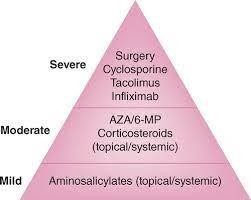A nurse is reviewing the laboratory results of a client who has Parkinson's disease and a prescription for carbidopa/levodopa. Which of the following values should the nurse report to the provider?
Fasting blood glucose 96 mg/dL
Hemoglobin 10 g/dL
Platelet count 200,000/mm3
BUN 10 mg/dL
The Correct Answer is B
Choice A rationale:
A fasting blood glucose level of 96 mg/dL is within a normal range and is not typically associated with carbidopa/levodopa therapy.
Choice B rationale:
Hemoglobin levels of 10 g/dL may indicate anemia, which can exacerbate symptoms in clients with Parkinson's disease and affect the effectiveness of carbidopa/levodopa.
Choice C rationale:
A platelet count of 200,000/mm3 is within a normal range and is not typically associated with carbidopa/levodopa therapy.
Choice D rationale:
A blood urea nitrogen (BUN) level of 10 mg/dL is within a normal range and is not typically associated with carbidopa/levodopa therapy.
Nursing Test Bank
Naxlex Comprehensive Predictor Exams
Related Questions
Correct Answer is B
Explanation
Choice A rationale
Omeprazole is a proton pump inhibitor used to reduce stomach acid production and is not typically used for treating bloody stools in inflammatory bowel disease.
Choice B rationale:
Infliximab is used to treat inflammatory bowel disease and can help manage symptoms such as bloody stools by suppressing the inflammatory response.
Choice C rationale:
Ondansetron is an antiemetic used for nausea and vomiting, not related to bloody stools.
Choice D rationale:
Metoclopramide is used to treat nausea, vomiting, and gastrointestinal motility disorders, not specifically indicated for bloody stools.

Correct Answer is A
Explanation
Choice A rationale:
Clustering nursing care activities minimizes disruptions to the client, reduces fatigue, and allows for periods of rest in between interventions.
Choice B rationale:
Hyperoxygenating the client before suctioning helps maintain adequate oxygenation and prevents hypoxia during the suctioning procedure.
Choice C rationale:
Keeping the room well lit is not necessary for a client on mechanical ventilation and can actually disturb their rest.
Choice D rationale:
Maintaining a specific PaCO2 level might be important for some clients, but this is not a general action applicable to all mechanically ventilated clients.
Whether you are a student looking to ace your exams or a practicing nurse seeking to enhance your expertise , our nursing education contents will empower you with the confidence and competence to make a difference in the lives of patients and become a respected leader in the healthcare field.
Visit Naxlex, invest in your future and unlock endless possibilities with our unparalleled nursing education contents today
Report Wrong Answer on the Current Question
Do you disagree with the answer? If yes, what is your expected answer? Explain.
Kindly be descriptive with the issue you are facing.
